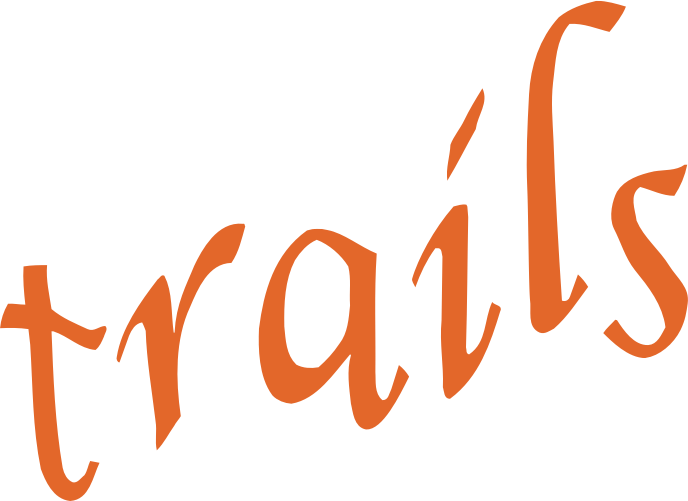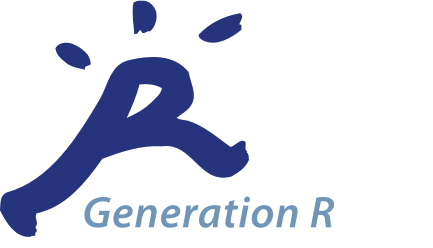-
measure Child Gap Antisaccade
Study: YOUth Mode of collection: MeasurementsAndTests Eyetracking Available measurements: Baby and Child 6 years
Child and Adolescent 9 years 12 yearsThe Gap-overlap task is a gaze contingent paradigm that measures visual attention shifting between a central and a peripheral stimulus. This is thought to be a key sub process underlying behavioral control. The Gap-overlap task contains three conditions; i) Gap, in which the central stimulus disappears 200ms before the appearance of the peripheral target;...Created March 28, 2023 • Updated March 30, 2023 -
measure Delay Discounting - hypothetical
Study: YOUth Mode of collection: MeasurementsAndTests Behavioral/cognitive task Available measurements: Child and Adolescent 9 years 12 yearsThe Delay Discounting task is the most widely used paradigm to measure the capacity to wait for a hypothetical monetary reward in children between 8-18 years old. A child is given a series of option between a variable immediate monetary reward and 10 Euros after a certain delay. The delay of the 10 Euro reward varies between 2, 30, 180, or 365 days. Each...Created March 28, 2023 • Updated March 30, 2023 -
measure Delay of gratification task
Study: TRAILS Mode of collection: Observation Available measurements: The Next Generation T3 T4 T5The Delay of Gratification task aims to measure self-regulation by presenting the child with the choice between a small reward in the short-term and a larger reward in the long-term. The classic implementation of the Delay of Gratification task is the Marshmallow experiment, in which a child is presented with one marshmallow right now and is instructed...Created March 28, 2023 • Updated March 28, 2023 -
measure Delay of gratification task
Study: TRAILS Mode of collection: Observation Available measurements: The Next Generation T3 T4 T5The Delay of Gratification task aims to measure self-regulation by presenting the child with the choice between a small reward in the short-term and a larger reward in the long-term. The classic implementation of the Delay of Gratification task is the Marshmallow experiment, in which a child is presented with one marshmallow right now and is instructed...Created March 28, 2023 • Updated March 28, 2023 -
measure Delay of gratification task
Study: Generation R Mode of collection: Observation Available measurements: Main Cohort 3 yearsThe Delay of Gratification task aims to measure self-regulation by presenting the child with the choice between a small reward in the short-term and a larger reward in the long-term. The classic implementation of the Delay of Gratification task is the Marshmallow experiment, in which a child is presented with one marshmallow right now and is instructed...Created May 3, 2023 • Updated May 3, 2023 -
measure Delay of gratification task
Study: L-CID Mode of collection: Observation Available measurements: Early Childhood Cohort T2 T3The Delay of Gratification task aims to measure self-regulation by presenting the child with the choice between a small reward in the short-term and a larger reward in the long-term. The classic implementation of the Delay of Gratification task is the Marshmallow experiment, in which a child is presented with one marshmallow right now and is instructed...Created March 28, 2023 • Updated March 28, 2023 -
measure Delay of gratification task
Study: RADAR Mode of collection: Observation Available measurements: Third Generation T2The Delay of Gratification task aims to measure self-regulation by presenting the child with the choice between a small reward in the short-term and a larger reward in the long-term. The classic implementation of the Delay of Gratification task is the Marshmallow experiment, in which a child is presented with one marshmallow right now and is instructed...Created March 28, 2023 • Updated April 4, 2023 -
measure Delay of gratification task
Study: YOUth Mode of collection: Observation Available measurements: Baby and Child 3 yearsThe Delay of Gratification task aims to measure self-regulation by presenting the child with the choice between a small reward in the short-term and a larger reward in the long-term. The classic implementation of the Delay of Gratification task is the Marshmallow experiment, in which a child is presented with one marshmallow right now and is instructed...Created March 28, 2023 • Updated March 30, 2023 -
measure Delay of gratification task
Study: Generation R Mode of collection: Observation Available measurements: Main Cohort 3 yearsThe Delay of Gratification task aims to measure self-regulation by presenting the child with the choice between a small reward in the short-term and a larger reward in the long-term. The classic implementation of the Delay of Gratification task is the Marshmallow experiment, in which a child is presented with one marshmallow right now and is instructed...Created May 3, 2023 • Updated May 3, 2023 -
measure Delay of gratification task
Study: NTR Mode of collection: Observation Available measurements: Young Netherlands Twin Register YC_BS1The Delay of Gratification task aims to measure self-regulation by presenting the child with the choice between a small reward in the short-term and a larger reward in the long-term. The classic implementation of the Delay of Gratification task is the Marshmallow experiment, in which a child is presented with one marshmallow right now and is instructed...Created March 28, 2023 • Updated April 4, 2023 -
measure EEG Face Emotion
Study: YOUth Mode of collection: MeasurementsAndTests EEG Available measurements: Baby and Child 10 months 3 years 6 yearsTo understand how the developing brain differentially responds to viewing faces with different facial expressions (happy and fear), young children (from 10 months onwards) passively watch pictures of happy or fearful faces while we measure their EEG. Note that the same faces but with neutral expressions have been presented in EEG Face House experiment....Created March 28, 2023 • Updated March 30, 2023 -
measure Gaze Cueing experiment
Study: YOUth Mode of collection: MeasurementsAndTests Eyetracking Available measurements: Baby and Child 5 months 10 months 3 years 6 years
Child and Adolescent 9 years 12 yearsThe social gaze task is an eye-tracking task that measures a subject's sensitivity to another person's gaze direction as a possible cue to predict the location of a next event. Sensitivity to gaze direction is taken as a marker of social competence. In a trial, children see a face with direct gaze, followed by an eye gaze shift to one side, followed by a...Created March 28, 2023 • Updated March 30, 2023 -
measure Infant Face Popout
Study: YOUth Mode of collection: MeasurementsAndTests Eyetracking Available measurements: Baby and Child 5 months 10 months 3 years 6 yearsShortened version of the face-pop out experiment (Gliga et al, 2009 Exp1; Elsabbagh et al., 2013): free viewing experiment in which children are presented with multiple five-item arrays (always: 1. Human face; 2. Car; 3. Mobile phone; 4. Bird; 5; Face-shaped noise figure). It tests whether children automatically orient to faces and whether they prefer to...Created March 28, 2023 • Updated March 30, 2023 -
measure Infant Stop Signal Anticipation Test
Study: YOUth Mode of collection: MeasurementsAndTests Behavioral/cognitive task Available measurements: Baby and Child 6 yearsThe Stop Signal Anticipation task is adopted from Zandbelt and Vink (Vink et al., 2014, Zandbelt et al., 2008) and is also used as MRI task in YOUth child and adolescent (METC 14-617). The Stop Signal Anticipation task measures response inhibition, which is considered an important aspect of behavioral control. Children will be instructed to stop a moving...Created March 28, 2023 • Updated March 30, 2023 -
measure Inhibition experiment (mock scanner)
Study: YOUth Mode of collection: MeasurementsAndTests Behavioral/cognitive task Available measurements: Child and Adolescent 9 years 12 yearsBehavioral output file of the inhibition experiment practice run preceding the Functional MRI Inhibition experiment.Created March 28, 2023 • Updated March 30, 2023 -
measure Looking While Listening
Study: YOUth Mode of collection: MeasurementsAndTests Eyetracking Available measurements: Baby and Child 3 yearsThis eye tracking task is a simplified version of a visual world paradigm, in which every trial presents pairs of familiar images/objects of roughly the same size (example: a chair and a bath), accompanied with a pre-recorded Dutch sentence that asks the participant to look at one of these images (e.g., where is a chair?). This paradigm - known as Looking...Created March 28, 2023 • Updated March 30, 2023 -
measure Parent-Child Interaction (PCI)
Study: YOUth Mode of collection: Observation Available measurements: Baby and Child 5 months 10 months 3 years 6 yearsParent child interaction (PCI) is recorded to code qualitative aspects of the observed interaction between parent and child based on explicitly defined behaviors. The PCI consists of age appropriate structured tasks that include a common mildly stressful event (clean-up and a teaching task), and a pleasant event (unstructured free play).Created March 28, 2023 • Updated March 30, 2023 -
measure Parent-Child Interaction (PCI) - Conflict
Study: YOUth Mode of collection: Observation Available measurements: Child and Adolescent 9 years 12 yearsParent child interaction (PCI) is recorded to code qualitative aspects of the observed interaction between parent and child based on explicitly defined behaviors. The PCI consists of age appropriate structured scenarios that include a common mildly stressful topic (Conflict task), and a pleasant scenario (Cooperation task). In the Conflict task, children...Created March 28, 2023 • Updated March 30, 2023 -
measure Parent-Child Interaction (PCI) - Cooperation
Study: YOUth Mode of collection: Observation Available measurements: Child and Adolescent 9 years 12 yearsParent child interaction (PCI) is recorded to code qualitative aspects of the observed interaction between parent and child based on explicitly defined behaviors. The PCI consists of age appropriate structured scenarios that include a common mildly stressful topic (Conflict task), and a pleasant scenario (Cooperation task). In the Vacation task,...Created March 28, 2023 • Updated March 30, 2023 -
measure Prosocial Cyberball Game (PCG)
Study: L-CID Mode of collection: MeasurementsAndTests Behavioral/cognitive task Available measurements: Early Childhood Cohort T1 T2 T3 T4The Prosocial Cyberball Game (PCG) measures prosocial behavior related to empathy when seeing that someone is being socially excluded. In the game, children play a (digital) ball-tossing game with peers. In the first block of the game, all children typically receive the ball an equal amount of time. In the second block of the game, one of the peers is...Created March 28, 2023 • Updated March 28, 2023






